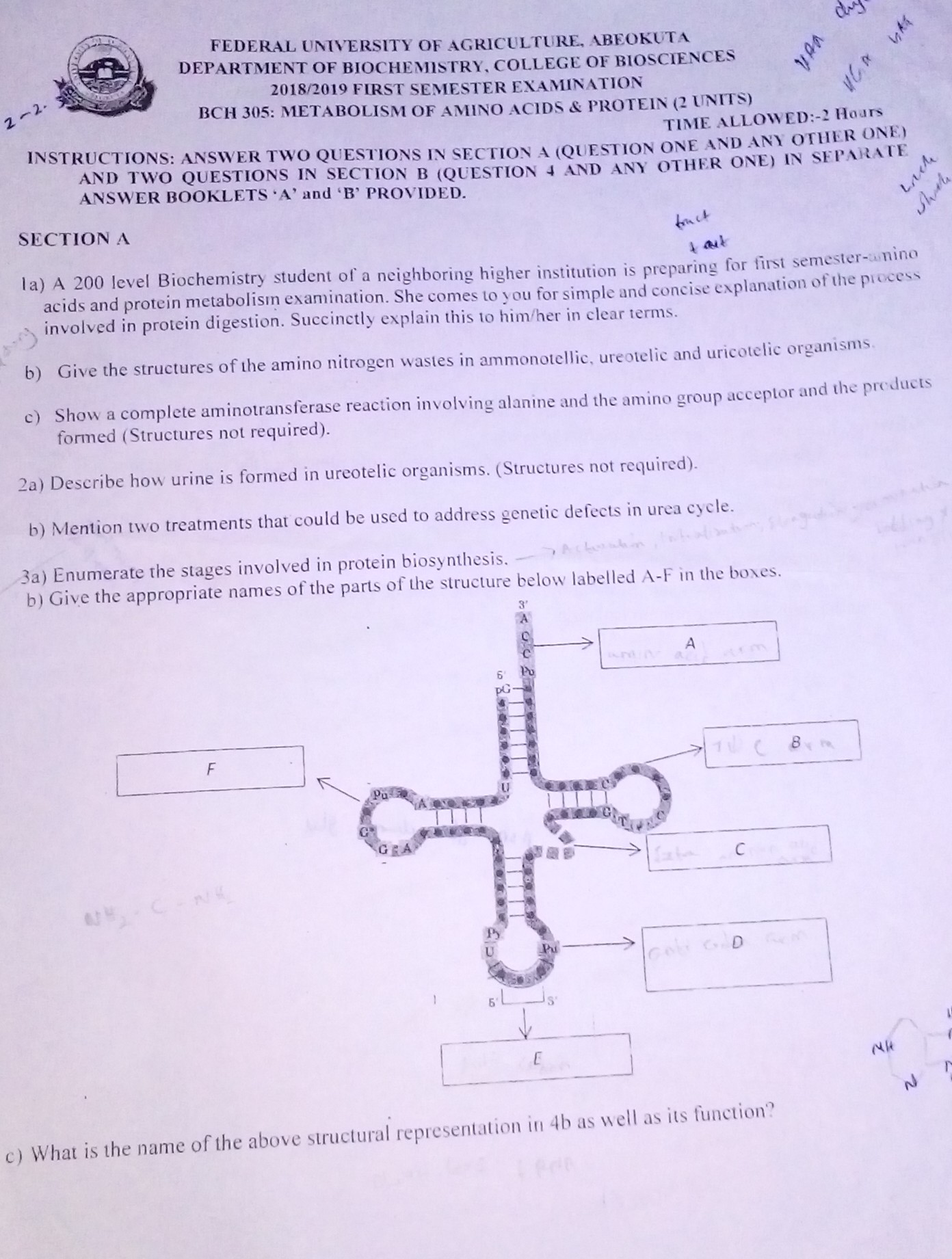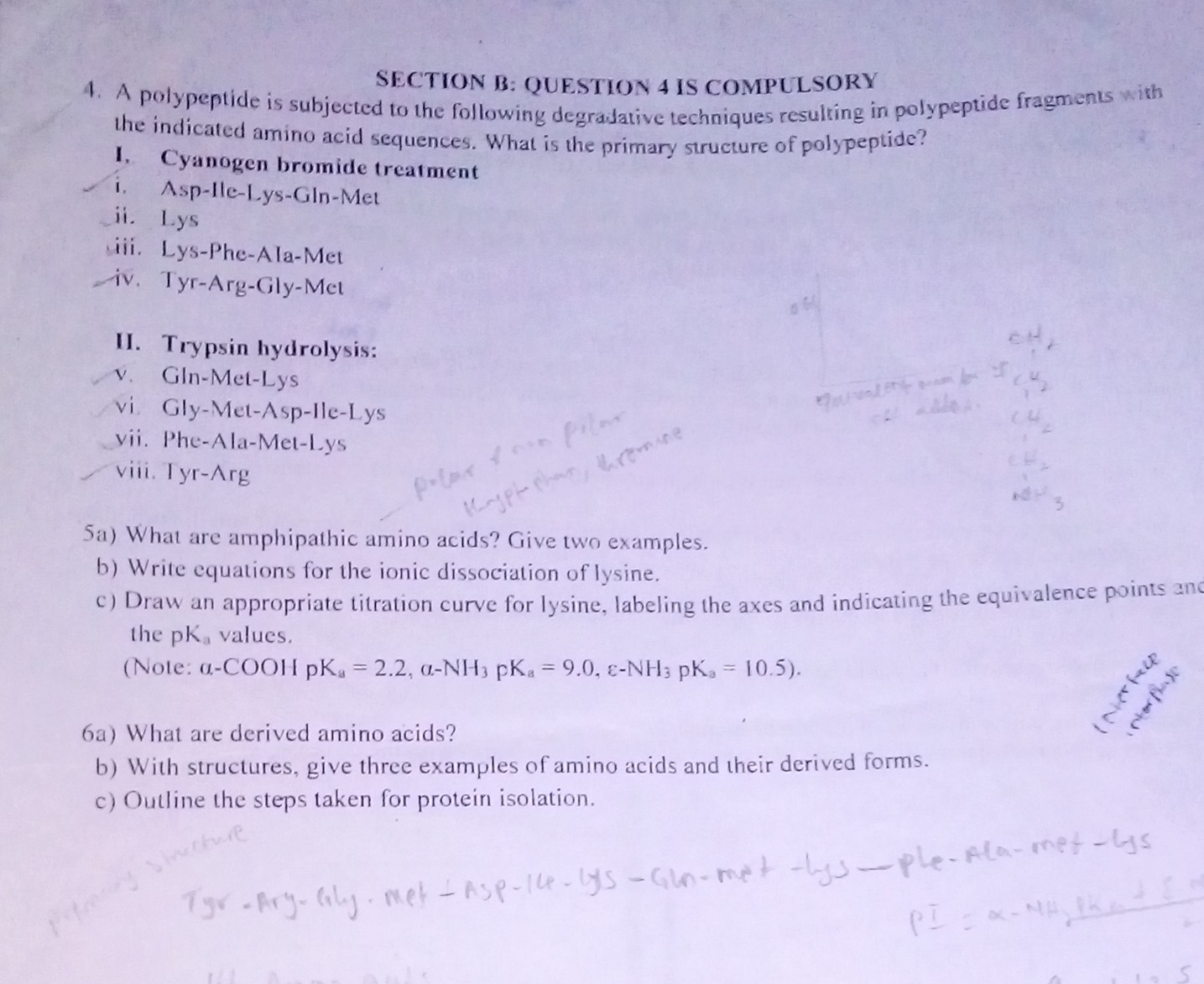

SECTION A
Question 1
(a) A 200 level biochemistry student of a neighboring higher instruction is preparing for first semester-amino acids and protein metabolism examination. She comes to you for simple and concise explanation of the process involved in protein digestion. Succinctly explain this to him/her in clear terms.
(b) Give the structures of the amino nitrogen waste in ammonotellic, ureotelic and uricotelic organisms.
(c) Show a complete aminotransferase reaction involving alanine and the amino group acceptor and the products formed (Structures not required).
Question 2
(a) Describe how urine is formed in ureotelic organisms. (Structures not required).
(b) Mention two treatments that could be used to address genetic defects in urea cycle.
Question 3
(a) Enumerate the stages involved in protein biosynthesis.
(b) Give the appropriate names of the parts of the structure below labelled A-F in the boxes.
(c) What is the name of the above structural representation in 3b as well as it's function?
SECTION B
Question 4
A polypeptide is subjected to the following degradative techniques resulting in polypeptide fragments with the indicated amino acid sequences. What is the primary structure of polypeptide?
(I) cyanogen bromide treatment
(a) Asp-Ile-Lys-Gln-Met
(b) Lys
(c) Lys-Phe-Ala-Met
(d) Tyr-Arg-Gly-Met
(II) Trypsin hydrolysis:
(a) Gln-Met-Lys
(b) Gly-Met-Asp-Ile-Lys
(c) Phe-Ala-Met-Lys
(d) Tyr-Arg
Question 5
(a) What are amphipathic amino acids? Give two examples.
(b) Write equations for the ionic dissociation of lysine.
(c) Draw an appropriate titration curve for lysine, labeling the axes and indicating the equivalence points and the pKa values
(Note: a-COOH pKa = 2.2, a-NH3 pKa = 9.0, e-NH3 pKa = 10.5).
Question 6
(a) What are derived amino acids?
(b) With structures, give three examples of amino acids and their derived forms.
(c) Outline the steps taken for protein isolation
............